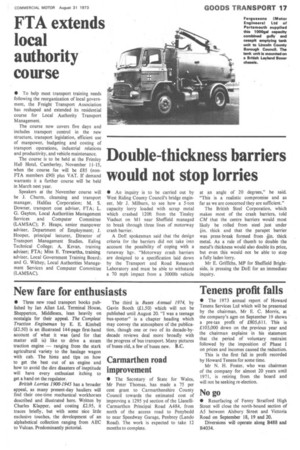would not stop lorries Double-thickness barriers
Page 19

If you've noticed an error in this article please click here to report it so we can fix it.
• An inquiry is to be carried out by West Riding County Council's bridge engineer, Mr J. Milburn, to see how a 5-ton capacity lorry loaded with scrap metal which crashed 120ft from the Tinsley Viaduct on M1 near Sheffield managed to break through three lines of motorway crash barrier.
A DoE spokesman said that the design criteria for the barriers did not take into account the possibility of coping with a runaway hgv. "Motorway crash barriers are designed to a specification laid down by the Transport and Road Research Laboratory and must be able to withstand a 70 mph impact from a 3000Ib vehicle at an angle of 20 degrees," he said. "This is a realistic compromise and as far as we are concerned they are sufficient."
The British Steel Corporation, which makes most of the crash barriers, told CM that the centre barriers would most likely be rolled from steel just under 4-in. thick and that the parapet barrier was press-break formed from din. thick metal. As a rule of thumb to double the metal's thickness would also double its price, but even this would not be able to stop a fully laden lorry.
Mr E. Griffiths, MP for Sheffield Brightside, is pressing the DoE for an immediate inquiry.












































































































